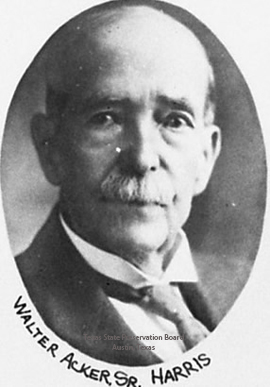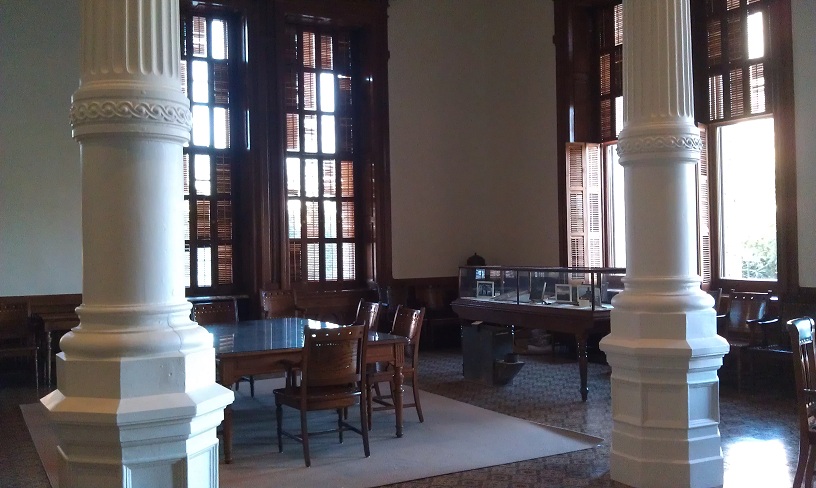- See how a bill becomes a law in Texas. (House Research Organization, February 20, 2013)
- Examine payday lending and the effects on borrowers. (Pew Charitable Trusts, February 2013)
- Search for state legislation. (Sunlight Foundation, 2013)
- Explore what triggers sequestration and what the effects will be. (Congressional Research Service, January 10, 2013)
- Track state-by-state implications of sequestration. (The White House, February 22, 2013)
- Consider the "crash tax" going into effect in one Texas town. (Texas Monthly, February 22, 2013)
- "Can Texas Beat Its Fund-Balance Addiction?" Stateline, February 13, 2013.
- "Austin Senator wants public vote on budget trick," Austin American-Statesman, January 31, 2013.
|
Bills & Joint Resolutions
|
82nd Regular Session
(Nov. 8, 2010-Feb. 24, 2011)
|
83rd Regular Session
(Nov. 12, 2012-Feb. 21, 2013)*
|
% change |
| House filed | 1,886 | 1,673 | -11.29% |
| Senate filed | 940 | 720 | -23.40% |
| Total filed | 2,826 | 2,393 | -15.32% |
| House referred to committee | 970 | 1,188 | 22.47% |
| Senate referred to committee | 745 | 588 | -21.07% |
| Total referred to committee | 1,715 | 1,776 | 3.56% |
| House scheduled for hearing | 19 | 78 | 310.5% |
| Senate scheduled for hearing | 34 | 109 | 220.59% |
| Total scheduled for hearing | 53 | 187 | 252.83% |
| House reported out of committee** | 7 | 1 | -85.71% |
| Senate reported out of committee | 16 | 33 | 106.25% |
| Total reported out of committee | 23 | 34 | 47.83% |
- See how the adult children of immigrants are doing. (Pew Research, February 7, 2013)
- Explore growth in spending on federal means-tested programs and tax credits. (Congressional Budget Office, February 11, 2013)
- Examine state-by-state data on small businesses. (U.S. Small Business Administration, February 2013)
- Check out the STAAR end-of-course exam results by school district. (The Texas Tribune, February 14, 2013)
- The Politics and Policies of the Medicaid Expansion. Kaiser Health News, February 15, 2013.
- Wogan, J.B. "Advancing the Debate: Political, Fiscal Costs of the Medicaid Expansion." Governing, February 11, 2013.
- "State Legislatures Debate Medicaid Expansion." Patient Protection and Affordable Care Act State Action Newsletter. National Conference of State Legislatures, February 8, 2013.
- Scott, Dylan. "States Send Warning to Feds with Medicaid Expansion 'Triggers'." Governing, February 5, 2013.
- Scott, Dylan. "Medicaid Expansion & States: Will They or Won’t They?" Governing, December 2012.
- Check out the latest Urban Mobility Report, with a new measure of travel reliability, the Planning Time Index. (Texas A&M Transportation Institute, February 5, 2013)
- Track state efforts to combat Medicaid fraud and waste. (MacArthur Foundation, February 6, 2013)
- Explore Medicaid spending and enrollment. (Kaiser Commission on Medicaid and the Uninsured, 2013)
- Examine state performance in election administration. (Pew Charitable Trusts, February 5, 2013)
Caring for Those Who Served
Feb 12
 |
|
Walter Acker was the last Confederate veteran to serve in the Texas Legislature. (Photo courtesy of the State Preservation Board) |
 |
|
In 1913, the Texas Confederate Museum was located in the west wing of the Capitol, in what is now the Agricultural Museum/meeting room. |
 |
|
Sen. Leticia Van de Putte, chair of the Veterans Affairs and Military Installations Committee, presenting a Quilt of Valor to honoree SPC Cody Miller. |
 |
|
Sandra Smith, Adria Garcia, Cassaundra St. John, and Victoria Wegwert with the F7 Group, which works to empower female veterans and their families. |
| Photos by Amy Batheja except as noted. |
Second in a series of posts about the 33rd Legislature, held 100 years ago. Read the first post here.
One hundred years ago, the U.S. observed the fiftieth anniversary of the end of the Civil War. Many of those who fought in the war were still alive, and taking care of these aging veterans had been an ongoing issue since the end of the war.
Confederate Pensions
While Union Army veteran pensions were covered by the federal government, care of Confederate veterans was left up to individual states. In 1899, Texas began issuing pensions to indigent and disabled former Confederate soldiers. The pension rolls grew every year; in 1905 there were approximately 7,680 pensioners on the rolls, and by November of 1913 there were 14,980. The number of pensioners would reach 18,128 by the following year (1914). This increase was due, in part, to the expansion in 1912 of benefits to more recent residents of the state.
The law allowed for a distribution of $8.33 per month ($100/year). However, the law also allowed that if not enough money was available, the veterans would receive a pro rata amount of what was available. Although the legislature allotted $500,000 each year to the fund, it was not enough; pensioners received just $42 for the entire year ending in 1913.
The situation improved when Texas voters passed a constitutional amendment in 1912 approving an ad valorem tax that would specifically go toward funding Confederate pensions. In 1917, for example, pensioners received $22 in one quarter (approx. $88/year). The tax was repealed in 1979, and language about the pension fund was removed from the Constitution in 1999, as part of a clean-up of "duplicative, executed, obsolete, archaic, and ineffective provisions."
- Confederate Homes for Men and Women housed those unable to care for themselves; read more about the men's home and the women's home in the Handbook of Texas Online.
- For more information about the full history of pension amounts, visit this link at the Texas State Library and Archives Commission.
- Search the online index of pension applications: https://www.tsl.state.tx.us/apps/arc/pensions/
Caring for Veterans in 2013
During this session, legislators have introduced a number of bills and resolutions regarding veterans. Many of them are related to taxes, especially the homestead property tax exemption amendment passed in 2011. View them all by searching TLO; set the bill type to "all" and search by subjects "Military & Veterans (I0535)" and "Resolutions - Constitutional Amendments (I0661)."
Other bills include:
- facilitating the occupational licensing of veterans and their spouses (SB 162 by Senator Leticia Van de Putte and HB 45 by Representative Dan Flynn; SB 242 by Senator John Carona; HB 757 by Representative Joe Pickett)
- adding disabled veterans to the list of business owners who may be certified as having a historically underutilized business (SB 116 by Senator Juan Hinojosa and HB 194 by Representatives Joe Farias and Bennett Ratliff)
- establishing veteran resource centers at state colleges and universities (HB 171 by Representative Roberto Alonzo)
- granting leave to new veterans who are employed by the state so they may tend to matters related to civilian reintegration (SB 442 by Senator Brian Birdwell)
Since 2007, legislators have honored wounded veterans during a Wounded Warrior day (SR 68 by Senator Leticia Van de Putte) at the Capitol. Recently, six veterans were honored on the floor of the Senate, including Senator Brian Birdwell, a retired U.S. Army officer who was wounded in the September 11, 2001, attack on the Pentagon.
To view all veteran-related bills that have been filed during the 83rd Regular Session, visit Texas Legislature Online and search directly under the subject Military & Veterans (I0535).
Did You Know?
There are many monuments on the Capitol grounds honoring veterans, but the newest monument will have its groundbreaking on March 25, 2013. The Vietnam Veterans Memorial will be located on the northeast side of the Capitol, near the Peace Officers Memorial, and will be dedicated this fall. Click here to learn more about the groundbreaking and see 3-D renderings of the monument.
- Examine a 50-state survey of Medicaid and CHIP eligibility and enrollment data. (Kaiser Commission on Medicaid and the Uninsured, January 2013)
- See how Americans value postsecondary educational attainment. (Lumina Foundation, February 5, 2013)
- Consider how the environment affects children's health. (U.S. Environmental Protection Agency, January 2013)
- Map economic data down to the neighborhood level. (Rich Blocks, Poor Blocks, 2013)
- Explore America's economy via mobile app. (U.S. Census Bureau, accessed February 6, 2013)
- HB 4 by Representative Allan Ritter. Relating to the creation and funding of the state water implementation fund for Texas to assist the Texas Water Development Board in the funding of certain water-related projects.
- HB 11 by Representative Allan Ritter. Relating to the appropriation of money from the economic stabilization fund to finance certain water-related projects.
- HB 227 by Representatives Lyle Larson and Paul Workman. Relating to the appropriation of money from the economic stabilization fund to be used for the purposes of the water infrastructure fund during the next state fiscal biennium.
- SB 4 by Senator Troy Fraser. Relating to the administration and functions of the Texas Water Development Board.
- SB 22 by Senator Troy Fraser. Relating to the administration of the Texas Water Development Board; making an appropriation from the economic stabilization fund to finance certain water-related projects.
- SB 224 by Senator Kel Seliger. Relating to the availability of money from the economic stabilization fund to be used for the purposes of projects in the state water plan.
- SB 235 by Senator Troy Fraser. Relating to the creation of regional authorities for water infrastructure projects.

